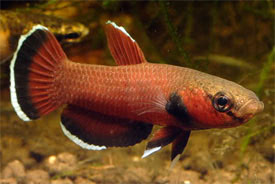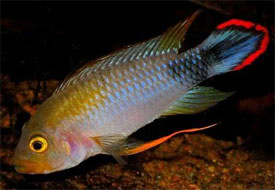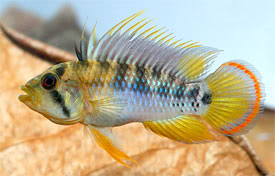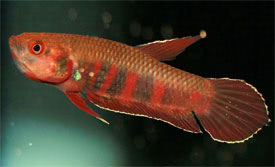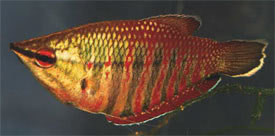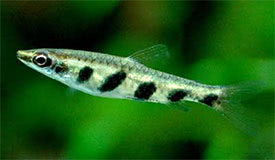
 Magyarul / Hungarian
Magyarul / Hungarian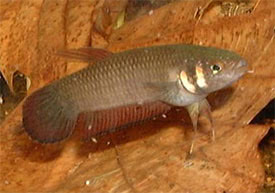
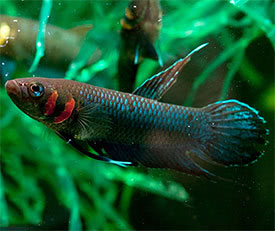

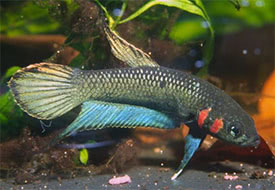
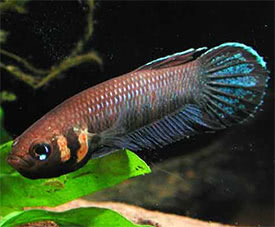
- Scientific name: Betta foerschi
- Synonyms: -
- Common name: -
- Group: Labyrinth fishes
- Habitat:Asia; Central asn Western Kalimantan (Borneo)
- Size: 5-7 cm
- Biotope: Inhabits shallow streams and pools in forests swamps, where the water is very soft and acidic. The substrate is usually covered by fallen leaves.
- Social behavior: Peaceful, but not recommended for a typical community aquarium. Best kept in pairs, or in a small group of 1 male and 2-3 females in a species tank.
- Diet: Omnivorous; in nature they eat small insects and invertebrates, so in the aquarium they should be fed with live and frozen foods.
- Breeding: Quite easy
- Tank: Minimum 50 litres
- Population: 1 pair for 75 litres
- Decoration: Decorate their tank with roots and branches, that can provide hiding places. The addition of dried leaf litter that color the water might be useful. Use dim lighting, or use floating plants and cover their tank well.
- Temperature: 22-28 °C
- pH: 4-6
- Hardness: 0-5 NK°
- Lifespan: 3-5 years
Description: The males are reddish-brown above, and iridescent greenish-blue on their flanks. The pelvic and anal fins are indigo blue, and the dorsal fin is brown. Each gill cover has two spectacular vertical orange-red bars. The female is brown with seven indistinct black bars on their flanks. The fins are reddish. Males are more colorful, and have extended unpaired fins than females. Both sexes have bars on their gill covers, but males have well-defined orange or reddish bars, while the females have yellowish bars.
Betta foerschi is a paternal mouthbrooder. They should be bred in a separate aquarium. The tank should have a tight fitting cover because the fry need access to a layer of warm and humid air to their labyrinth organ development. They usually spawn near the substrate in the typical betta way, where the male embrace the female with its body, the female releases the eggs and the male fertilizes them. The male then collects the eggs with his mouth, and this process continues until the female has released all her eggs. Stressed or unexperienced males may swallow or spit out the eggs. The eggs hatch in 8-14 days and the male will release fully-formed, free-swimming fry after this time. Each spawn produces about 40 fry. The fry can be removed from the breeding tank, or can be reared with the parents. Some breeders choose the latter, as the fry may grow more quickly this way. The fry are black colored and around 6 mm long, so they are large enough to accept newly hatched brine shrimp or similar sized live foods. For optimal growth rate, feed them with small amounts of foods 2-3 times a day, and do not forget the small and regular water changes.






